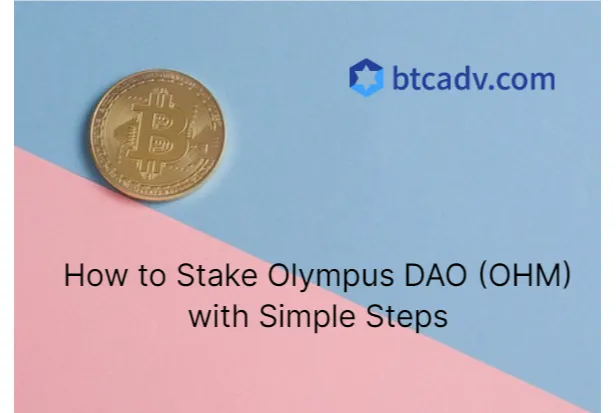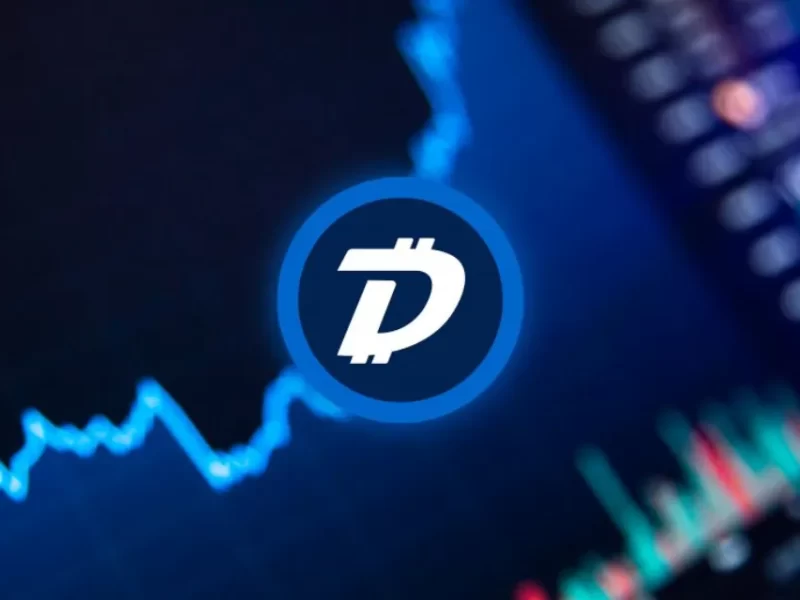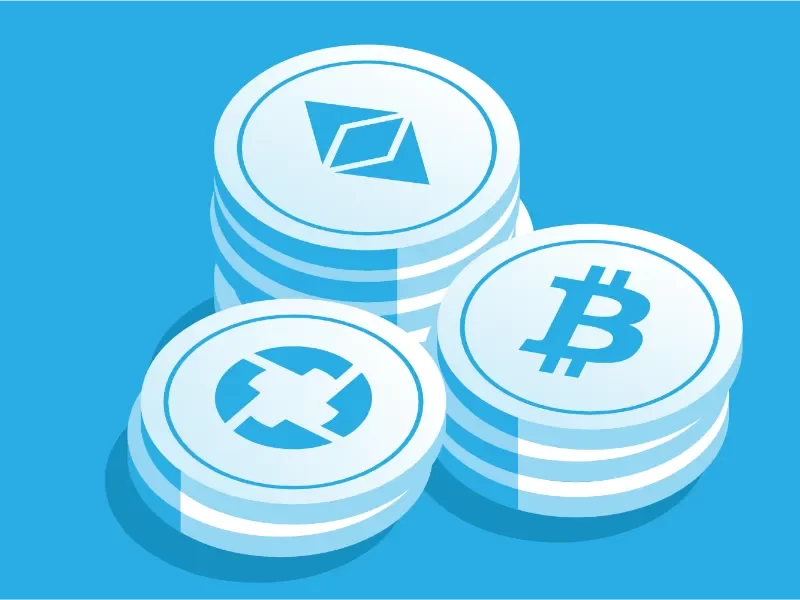Community-owned and decentralized reserve currency Olympus DAO has a very high yield rate historically, with APYs of up to 8,000% being common. Other cryptocurrencies like ETH and DAI are used in Olympus DAO’s operating treasury to support the value of the OHM token. It is intended for OHM to eventually replace all DeFi products as the basis currency, much like the US dollar is the world’s reserve currency.
Returns are generated in two different ways and are split among all users who stake OHM. First, there is revenue from the protocol’s sale of fresh OHM tokens. The second is from profits generated by the treasury, which uses a novel mechanism called “bondings”. In order to prevent any negative effects from the issuance of new tokens, stakers maintain their share of the market capitalization as it increases, ensuring that yield stays high.
What is Staking?
Staking is a method of using a cryptocurrency to perform work and receive rewards.
By putting up collateral, a validator acts as a node in the mechanism that verifies all transactions. This process is known as node staking. Blocks can be verified by validators who stake coins using the proof-of-stake (PoS) consensus algorithm. They may not receive block rewards or even lose some of the staked tokens if they submit a false transaction to the network.
The likelihood that a validator will receive a block is inversely correlated with the number of tokens that validator has staked relative to the total network of staked coins. For example, if you have 25% of the total coins staked, then you will have more chance to “win” the block reward than someone who only has 10% of the total coins staked.
You give the exchange your coins, and it stakes them to become a node validator. You must give custody of your coins to the exchange in exchange for removing a sizable portion of the validation risk. This is a great way to maximize yield while requiring the least amount of work and expertise to actually run a node.
Olympus DAO Staking
A method of distributing profits is to stake in Olympus. It is intended to stake, hold, and compound as the participants’ dominant strategy.
Olympus’ main goal is to increase the value of the treasury while rewarding those who invest in OHM, the company’s cryptocurrency. As a result, everyone who participates in the protocol benefits equally. Everyone receives the same percentage profit through sOHM (staked OHM), which also enables compounding yield while only requiring holding. This method is known by users as “(3,3)” and utilises game theory to try and ensure that as the protocol continues to grow, stakers continue to earn high yield.
How to Stake OHM
Although some centralised exchanges, like Gate.io, also sell OHM, buying it through a decentralized exchange (DEX) is the most typical option. Here are the steps you need to take to buy OHM using a DEX and stake it using the Olympus DAO website.
Stake your OHM tokens by following the steps below:
Step one: Once your OHM tokens reserve currency has been successfully bought and stored in your personal wallet, go to Olympus DAO’s official website and click on “Connect Wallet.”
Step two: You’d now be prompted to select a cryptocurrency wallet. To connect your wallet to the website, select the appropriate option and enter your password information.
Step three: Once you have entered the desired OHM stake amount, send your OHM to the address for OHM-staked smart contracts listed on the OHM website. If you would like to stake all your OHM, press the “Max” button and the input field will automatically be filled with all your available OHM balance.
Step four: After determining your stake amount, carefully select a reliable validator from the list provided.
Step Five: Make your choice, click “Approve” and sign the transaction. Select “Stake now” and sign the transaction. The stake of your OHM tokens has now been accomplished.
As soon as your Olympus tokens are in the staking contract, you can start receiving rewards. Visit the OHM staking dashboard to view your current staking balance and rewards.
Keep in mind that you must remove your tokens from the contract in order to receive your rewards. Unstaking is possible at any time, but if you do it before the reward period has ended, any rewards that haven’t been paid out yet are forfeited.
Visit the OlympusDAO website’s Stake page to unstake your OHM tokens and collect your rewards. Select “Unstake.” Next, enter in the necessary field the number of staked OHMs that you want to unstake. If you would like to unstake all your staked OHMs, click the “Max” icon and the input field will automatically enter all your available balances. Select “Approve” and sign the transaction. Once it’s been successfully approved, click “Unstake” and sign the transaction.
How Much Can I Make by Staking Olympus?
Find out exactly how much you could earn by using the Olympus earn calculator. But almost always, holding fiat money in a savings account at a bank earns less interest than staking OHM.
For instance, if you have £1000 in a savings account earning 1% interest, you would make £10 over the course of the year. This is typically deposited into your account once a month.
Higher, more adaptable, and more regular payouts are available with Olympus staking rewards. For instance, if you invest $1,000 to purchase OHM and deposit it on a staking platform, you might be able to earn much more and receive that money daily. If the OHM reward was 8%, this would be the calculation:
£1000 x 8% APY rewards = £80
£80/365 days = £0.21 per day
Or in Olympus:
1 OHM x 8% APY rewards = 0.08 OHM
0.08 OHM/365 days = 0.0002 OHM per day
Without forfeiting your rewards, you can also decide to change your bet size or take a cash withdrawal whenever you want. The price of the coin is more erratic than fiat money, and the value of your holdings can change drastically as a result.
Can I Stake Other Cryptos?
Yes, you can spread your funds across several platforms and stake a lot of cryptocurrencies to get the best rates. Here are some other cryptos that offer great staking rewards:
- Tether. The most popular stablecoin, Tether, is anchored to the dollar.
- USD coin. The second most widely used stablecoin is US Dollars.
- Binance coin. In addition to being a stablecoin, Binance coin was developed by the Binance exchange.
What is Rebasing?
The Olympus protocol distributes tokens every eight hours by sending them, without asking for sOHM in return, to the staking contract. This then raises the ratio of OHM staked to sOHM outstanding and causes a rebase to make up the difference.
A great example is as follows:
Assume there are 100,000 sOHM and 100,000 OHM outstanding. Assume further that the protocol generated $10,000 in profit throughout the day from its underlying assets, which it then used to create 10,000 OHM. The 10,000 OHM are then transferred to the staking contract, leaving us with 110,000 OHM staked and 100,000 sOHM outstanding. sOHM supply needs to increase by 10,000 or 10%, to return to a 1:1 balance. As a result, 10% of sOHM is rebased.
Recap: All of the 8-hour profits are distributed uniformly among all users by Olympus DAO. To achieve this, the supply of sOHM is increased to match the value of OHM, bringing the supply of OHM:sOHM to a ratio of 1:1.
Rebasing takes place retroactively, which means that it occurs eight hours after a profit has been made. Due to the delay, users can now predict their APY for the final eight hours of the current window. Users can see the rewards they are expected to receive thanks to this delay.
Is Staking Olympus Safe?
As of November 2021, Olympus DAO had been operational for about 8 months without any significant hacks or security lapses. It has amassed assets worth $4.45 billion in this time and sparked many forks (copies), which suggests that investors have a lot of faith in it. It is run by a visible, extremely active team that frequently collaborates with the local population to enhance the protocol.
It could, however, be vulnerable to as-yet-unknown risks like smart contract bugs or exploits, just like all DeFi protocols. Olympus does not appear to have any obvious red flags, but as with any cryptocurrency, only invest what you can afford to lose.(Read More: Is Staking Crypto Safe & Is It Worth Staking Crypto?)
Pros and Cons of Staking Olympus
A very high and reliable yield is one of Olympus DAO’s benefits. Growing returns are produced by the daily triple auto-compounding without the need for manual compounding. The project appears to be quite strong, with a strong community and the fundamental goal of becoming the decentralized currency of all DeFi projects.
The product’s lack of historical data, which makes it difficult to predict future returns, is undoubtedly a con. As more people stake, the APY will inevitably decrease, keeping returns high but decreasing until the final coin is released. Finally, because it is an Ethereum application, investing has high fees, making volume more important than consistent investments.
Pros
- high and reliable yield for investors.
- Treasury funds are compounded three times each day, accelerating the asset pool’s expansion.
- high levels of engagement and community.
- Returns are inconsistently high but vary.
Cons
- a novel and unproven method of investing with scant historical precedent.
- The Ethereum Network’s high fees are to blame.
- Because there is less of a difference between OHM and sOHM staked profits as more people participate, APY will inevitably decrease.
Where to Buy Olympus DAO (OHM)
Through decentralized exchanges like Sushiswap, you can buy OHM tokens. Please take note that you will require an Ethereum wallet address in order to successfully complete your purchase through this medium.
Here is how to buy Olympus DAO (OHM):
Step one: Open an account on any reliable centralized trading platform. Among other things, you’ll need to create a password and provide some basic personal data, like your email address.
Step two: Purchase ether (ETH) after your account has been successfully created.) By going to the platform’s page for ETH and then entering the required amount of ETH to buy, you can make this purchase. You will receive the purchased ETH on your account after completing your trade in accordance with the guidelines given.
Step three: Now transfer your ETH to your unique Ethereum wallet address. Create an Ethereum address if you don’t already have one by downloading an Ethereum-compatible crypto wallet. Your own Ethereum address will be available to you immediately after you complete the required steps and successfully open the wallet.
Step four: Send ETH to the address in your Ethereum wallet by transferring it from your centralized platform account. Connect your wallet to any decentralized exchange that supports OHM, like Uniswap, Sushiswap, or Ok.com.
Step five: Next, pick the ETH/OHM pair and enter the amount of ETH you want to exchange for OHM. Once the trade is completed, you will have acquired your OHM token(s). Checking your wallet’s balance will provide confirmation.
Bottom Line
We’ve covered the most important information about Olympus DAO and its native token OHM in this article. We’ve thought about what staking OHM is and the procedures involved in it, among other things.
Risks are inevitably higher when using a new investment tool, and this is especially true for something as novel and ambitious as OHM. However, early Olympous DAO users are rewarded for taking on additional risk, so it’s critical to consider the risks and rewards and gauge your tolerance for newer investment technologies.



